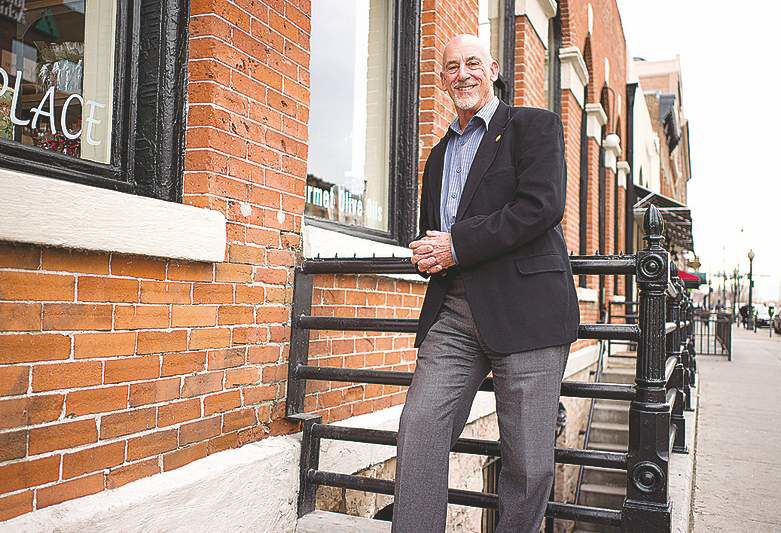Retirement plan allows for fast savings, but with risks
Published 4:00 am Thursday, December 6, 2012

- A defined-benefit plan is ideal for small-business owners in their 50s, like John Rogers, who have saved little but can now afford to put money aside each year.
With the prospect of significant changes in tax rates and deduction limits, taxpayers have been coming up with all sorts of strategies to save on their taxes, some riskier than others.
So I couldn’t help but be skeptical when I was told about a plan aimed at small-business owners in their 50s who have saved little for retirement but can now afford to put aside a lot of money each year. They can then deduct that money as a business expense, resulting in a significant tax savings.
But I checked with the Internal Revenue Service, and the plan is indeed legitimate.
It is a defined-benefit plan, much like the one large employers once regularly offered their workers, that guarantees a set monthly payment in retirement.
In this case, though, the plan works best for really small businesses — those that employ just one or two people.
The IRS allows a maximum annual contribution to the plan of about $255,000 for people in their 50s.
(For younger workers, the contribution limit is lower, because the calculation is based on the number of years until retirement. In some cases, the limit is so low that other retirement savings options might be better.) Total holdings in the plan are limited to $2.3 million to $2.4 million, enough to cover the maximum allowed payment in retirement of $200,000 a year.
Advisers said the plans were less effective in companies with more employees, particularly older ones, because the owner would be required to make contributions for all of them, and at a high level, since older employees are typically better paid and closer to retirement. (If the additional employees were young and low-paid, the cost of offering the plan to them might be low enough for it to make sense.)
“It’s not too good to be true,” said Lisa Germano, president and general counsel at Actuarial Benefits and Design Co. in Midlothian, Va. “But you need to be able to fund the plan and fund it for an indefinite period. It’s a commitment. That’s one of the reasons you get the reward.”
Some advisers like Germano were worried that, like other generous deductions, this one could be threatened in the current tax and budget negotiations. But regardless of how the talks in Washington turn out, this is still the time of year when many small-business owners need to decide whether to set up a defined-benefit plan or stick with more traditional forms of retirement savings, like SEP IRAs for the self-employed or a profit-sharing plan.
Here is some of what I learned.
Upside
Defined-benefit plans are mainly a way for small-business owners who neglected to save for retirement to catch up. The ideal candidates can put away $100,000 to $150,000 a year for at least 10 years, said Leigh Goldblatt, vice president and chief compliance officer at Glazer Financial Network.
This was the case with John Rogers, a Denver businessman. “I was in my late 50s and I didn’t have a penny saved for retirement,” he said.
He lost his life savings in his 40s, he said, in a recycling company he started with friends. He also raised six children, four of whom he said he put through college.
But by 2006, he was six years into being an independent contractor for Univera, a company that makes nutritional supplements. (The company’s sales model is similar to Amway’s, where people like Rogers sell to individuals or find other people to sell for them.)
With his business providing steady, predictable income — he and his wife are ranked as top sellers for the company — he wanted to start saving. He said a defined-benefit plan was attractive for both deferring taxes and for saving for retirement.
“Our adviser tells us at the beginning of the year what we have to contribute,” said Rogers, 63. “We’re very disciplined. We pay our defined-benefit plan first and then our business expenses.”
But even though the IRS assumes the plan will make monthly payments in retirement, which is why it allows people to save so much over a short period of time, most of these plans are shut down and the money in them rolled over to a regular retirement account, said Goldblatt, whose firm advised Rogers. This gives the owner control over how to withdraw the money.
Downsides
Such a chance for a retirement savings do-over, as it were, does not come without catches. And skeptics say these plans lure people with the prospect of quick and large retirement savings without discussing the risks.
“The primary problem with defined-benefit plans is you have to fund at least to a minimum level each year,” said Jerry Love, a certified public accountant in Abilene, Texas. “You also have to have an actuary do your actuarial analysis each year. And you have to fund the minimum amount, or your plan’s in violation and you have all kinds of problems.”
Since the retirement benefit is set, it is the responsibility of the person who created the plan to make sure it is financed to that level. This means regular annual contributions. It also means the owner must be prepared to put in extra money if the plan dips enough in value to be considered in default.
“The No. 1 thing that happens to people is their company or industry takes a dip and they don’t have the cash flow to fund the plan,” Love said. “There is no option. You have to fund this.”
For a company with only one or two employees, that problem is somewhat easier to manage. The plan could be reworked to lower the ultimate benefit if the owner cannot make the minimum payment or an additional payment, said Greg Stevens, senior financial counselor at Cabot Money Management.
But reworking a plan comes at a cost, which is another criticism of defined-benefit plans. Even if everything runs smoothly, the owner still has to pay someone $6,000 to $7,000 a year to do the actuarial calculations and handle the necessary filings, Stevens said. That is on top of fees to manage the investments in the plan.
“As soon as you get to the point where you’re not making contributions, you should dissolve it,” he said. But he cautioned people against thinking they could put a lot of money in one year and then dissolve the plan. To be compliant with the IRS, he said, the plan needs to be in place for at least five years.
Sharyn Cerniglia, who owns American Recycling Systems, which sells heavy equipment to the military, said her contract with the Defense Department had expired after 15 years. If it is not renewed, she said, she might retire.
However bittersweet that might be, she and her husband, who helps run the company, have been able to save a lot of money through a defined-benefit plan they set up in 2006. “We have a couple of million put away that we wouldn’t have put away otherwise,” she said.
Perfect candidates
Despite the caveats, most advisers saw a value in defined-benefit plans for certain people. Dr. Timothy Georgelas, a radiologist in Dallas, credited his plan with giving him financial security after 32 years as a doctor in the Army and Air Force.
Georgelas, 61, said that when he retired from the military in 2001, he went into private practice and within three years was making nearly triple what he had made in the Air Force. With that and his military pension, he said, he was earning more than he and his wife needed to live on, so he wanted to find a way to save some of it for retirement.
“It was really appealing to set aside a good chunk of money every year,” he said. “It was mind-boggling.”
Georgelas said that since 2004 he had put about $100,000 into his defined-benefit plan each year. He now has just under $1 million.
Yet he admitted that he had not had much luck persuading other doctors to open their own plans. “I think they’re scared to take the plunge,” he said. “I mention it to others and they say, ‘You’re kidding.’”







